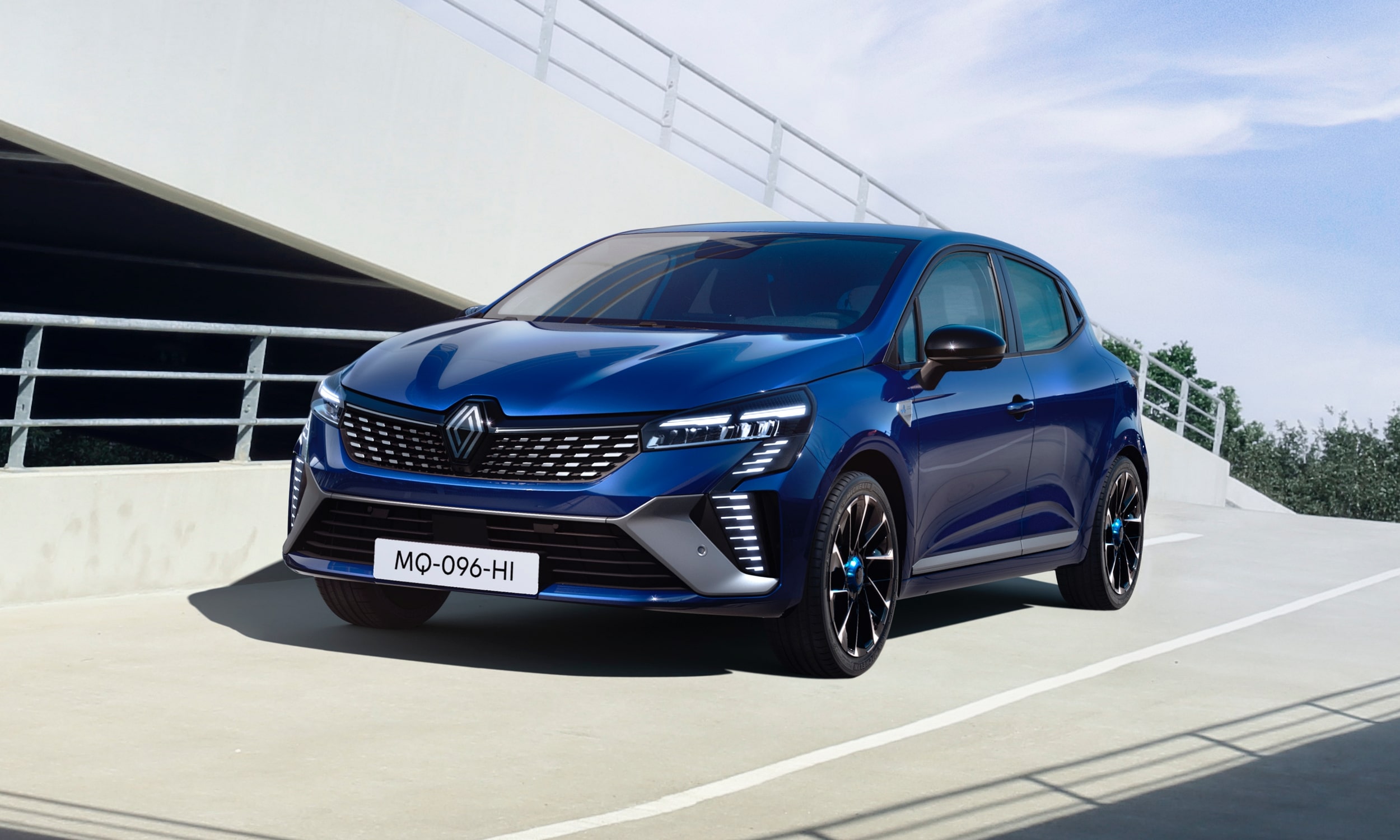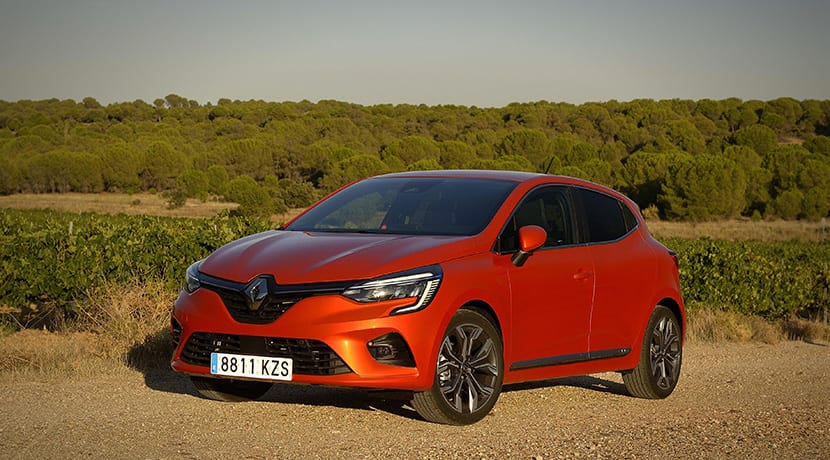
The new Renault Clio has already landed in Spain. It has only been in the official dealerships of the brand for a few days and we already have the full list of prices and equipment. Therefore, it is a good time to reconsider and see who your most direct rivals are. This way we can assess if we are interested in the utility of the diamond signature, or if we should better opt for some other model of the competition.
There are not a few rivals of the French model, a car that has just released its fifth generation. The segment B It is a category that has historically been one of the most important, and which increasingly shows better dynamic capabilities, more technology and better equipment in terms of safety. doWhat are the rivals of new renault clio and what do they offer us?
There are many B-segment models that are currently on the market. However, some have already been on the market for many years and, logically, are behind in many fields compared to the most recent additions. That is why we have not wanted to compare it with cars like the Kia Rio, the Toyota Yaris or the Hyundai i20.
Keys to the new Renault Clio

Although aesthetically it looks quite similar -perhaps too much- to the previous generation, the new Clio is developed on the updated CMF-B platform, using 85% new parts. It has reduced its weight, improved ride quality in terms of noise, vibration and roughness, and now comes with more complete equipment in terms of driving aids and safety systems. You can even incorporate a digital instrument cluster.
He has also updated his engines, adapting to the new anti-pollution regulations. At the moment, it is offered with 85 and 115 hp diesel versions, as well as 72, 100 and 130 hp gasoline mechanics. It is to be hoped that in a few months some more variants will be incorporated. 5- and 6-speed manual gearboxes are mostly used, but you can also opt for a dual-clutch transmission.
On the other hand, there is four trim levels. Sorted from least to most equipment, they are named as follows: Business, Intens, Zen and RS Line. The RS Line is the sportiest, replacing the previous GT Line. In any case, most of the sales of this car will be with Intens and Zen finishes.
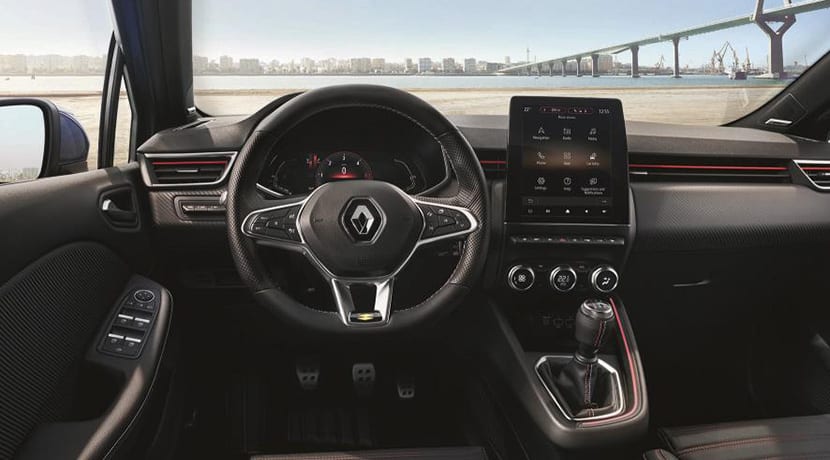
If we talk about active safety and driving aids, the Renault Clio can have the following systems: adaptive cruise control, lane keeping system, traffic assistant, automatic high beams, city emergency braking with pedestrian and cyclist detection, presence sensor in blind spot, recognition signals, 360-degree vision camera, front, rear and side parking sensors, as well as automatic battery and online parking, among others. Of course, accessing some of them will mean an extra payment, as usual.
We finished with Prices. According to the brand's configurator, this model has a price (with promotions, discounts and subject to financing) of 11.065 euros. My partner José Antonio, in this other article, detail the prices of all versions, as well as the main equipment of each trim level.
The most logical version (engine and finish) to our way of seeing is the motorization 1.0 TCe petrol with 100 hp and 160 Nm of torque, which homologates a mixed consumption of 5 l/100 km; linked with the Zen finish. Said finish already brings rear parking sensors, automatic climate control, electrically folding mirrors, 16-inch wheels, hands-free access and start, digital instrument panel and 7-inch central touch screen.
According to the configurator, the price of this variant (subject to financing) is $14.678. However, the official price that the brand communicated to the media a few months ago for this same version was 17.023 euros. We are going to be governed by the configurator price, both in this and in the rest of the models with which we are going to compare it, although you already know that the real final price is obtained at the dealer.
Ford Fiesta

Unfortunately for the blue oval brand, its model for segment B is not reaping the commercial success that was expected of it. At least in our country. However, this does not mean that the Ford Fiesta not be a recommended model. We have already tested it in a rational version although with a complete equipment (1.0 EcoBoost engine with 125 CV and Titanium finish), and we also put ourselves at the controls of the Ford Fiesta ST, the sports variant with 200 CV.


The Ford Fiesta is a car with a long tradition in Spain, but in this generation it is not being so demanded. It has taken a significant leap compared to its predecessor. It is a very well made car in almost every way. It has good interior qualities, a wide mechanical offer, bodies of different styles, a great roll on expressways without losing agility in the city and a good technological endowment.
However, due to all of the above, he has had to raise your price a little. Perhaps this, added to the fact that its rear seats and trunk are not the best in the category, has been the reason for its decline in sales.
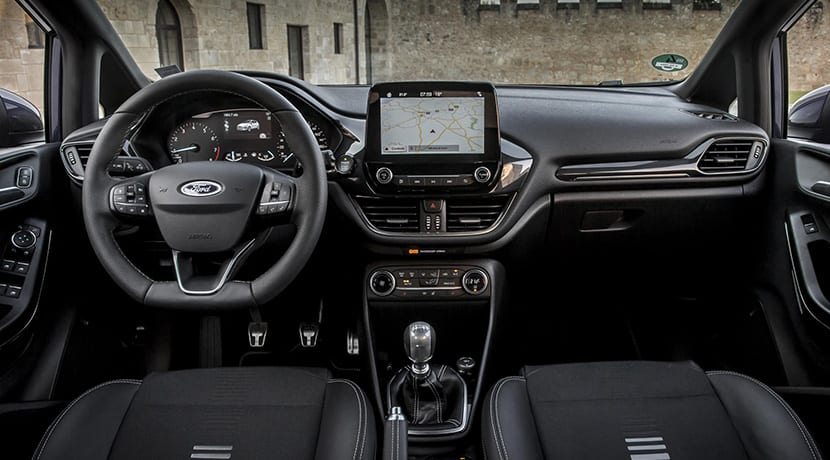
Thinking coldly and putting ourselves in the role of a potential buyer who wants a normal version with medium-high equipment, we believe that the ideal version would be a unit with the engine 1.0 EcoBoost 100 hp and Trend finish, although with several options.
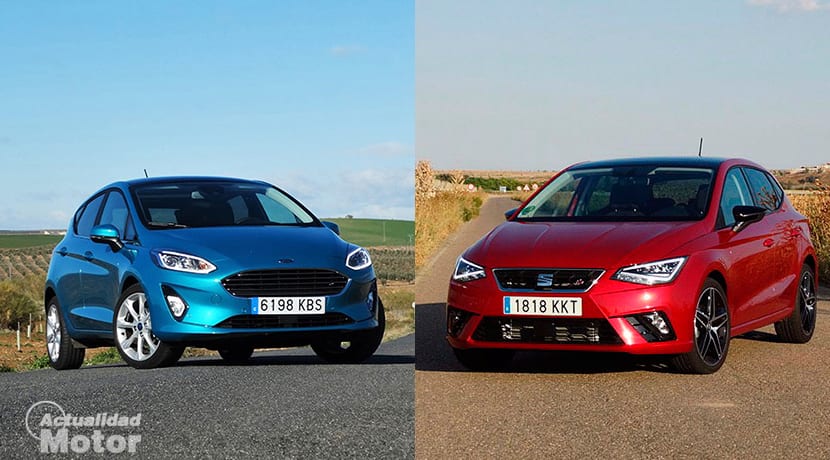
It starts from just over 12.900 euros, although adding extras such as 16-inch wheels, rear parking sensors, electrically folding mirrors, Full LED headlights and wireless charging for mobile phones, we would go to $14.000 depending on the configurator (with discounts and financing). Somewhat cheaper than the previously configurator Clio, but also less equipped.
Opel Corsa

Another great rival newcomer to segment B is the Opel Corsa. It is probably the model that looks more directly at the Renault Clio. As you know, the new Corsa has not been developed by General Motors, but by the new manufacturer to which the German brand belongs to very recently, PSA. For this reason, it has many technical similarities with the Peugeot 208, which we will talk about later because it is also on this list of rivals.
We have not yet been able to prove it, but Opel assures that its utility makes a very big leap. Thanks to the PSA platform, it has managed to reduce its weight by several tens of kilos, its aerodynamics have greatly improved and it has also received many security systems that I couldn't offer before. In addition, for the first time a fully electric version is offered.
La mechanical offer of the German utility (produced in Spain) consists of three gasoline engines, all 1.2 liters. There is an atmospheric version of 75 CV, and two supercharged, one with 100 and another with 130 CV. In the diesel section appears a 1.5 with 100 hp. Lastly, we have the 100% electric versioncalled Opel Corsa-e, with 136 CV that starts at 29.900 euros.
The Opel Corsa has a youthful and fresh design, without falling into features that make it too flashy or peculiar. Inside there seems to be a combination of previous Opel elements, such as the steering wheel or the central screen, and others more typical of PSA, such as the instrument panel or the gear selector in the case of automatic versions. In any case, it is noted greater technological contribution, something of which the predecessor generation sinned.
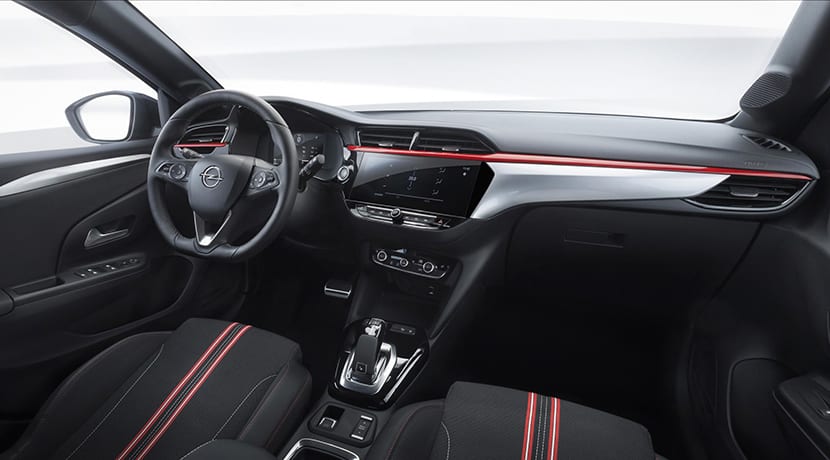
As I said, we haven't been able to test it yet. However, this model has everything you need to stand up to the segment. Traditionally, the Corsa has always done very well at the sales level in Spain, and this renewal will probably mean a new push. We hope to see you very soon among the top5 of the category.
In its internal combustion versions, it has three trim levels, which are Edition, GS-Line and Elegance. The most equipped versions have frontal collision alert, automatic emergency braking with pedestrian detection, infotainment screen of up to 10 inches with navigator, matrix LED headlights or digital instrument panel. There is no lack of adaptive cruise control, traffic sign recognition, lane keeping assistant, reversing camera and much more.
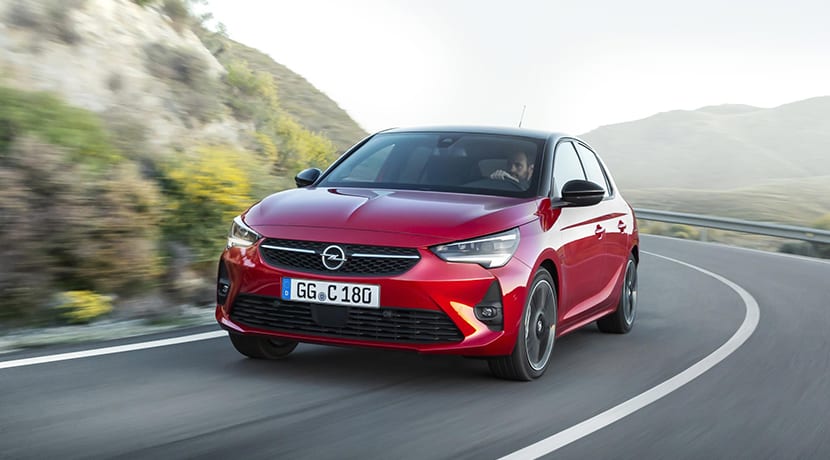
Thinking of a version with a decent engine and a medium-high equipment, we opted for the engine 1.2 Turbo 100 hp with 6-speed manual gearbox and the finish Edition to which we will add several extras. The starting price of this version is just under 14.100 euros.
Adding extras to complete equipment such as 16-inch alloy wheels, and various packages to improve safety and assistance systems, such as rear sensors, reversing camera, light and rain sensors and LED headlights, the price of the configurator goes up to $15.790. It would not carry all the elements available in this model, but it would have the most reasonable ones and with a clear focus on comfort and safety.
Of course, we cannot tell you about things such as the space perceived inside, the quality of the ride or the sensations behind the wheel because, as we have mentioned, we have not yet been able to test it.
Peugeot 208
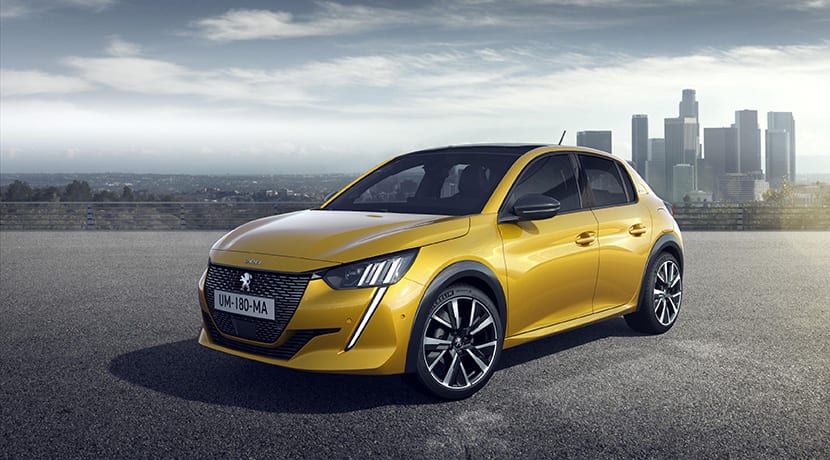
Like the Corsa and the Clio, the Peugeot 208 has been presented this year. Its arrival on the streets is imminent, with all the prices and equipment for our country already published. It's a matter of days. On the other hand, you already know that the Peugeot 208 and the Opel Corsa are like first cousins because they both belong to PSA. They share a platform, many parts, engines and technological systems. Even some visible elements are also common.
That said, in the new 208 we find a exterior aesthetics very characteristic, especially on the front. Those of Peugeot have risked something more than the rest in the design. The daytime running lights, which draw a fang shape, are especially striking. Yes, as if they were the fangs of the lion, the logo of the French company. The front is very personal.
The rear is also very attractive, especially in the sporty GT-Line finish. The design of the taillights communicated by a black strip -as in the 508-, give it a very characteristic touch. The negative part is that we do not know if it will look as good live and direct in the less equipped and more conventional aesthetic versions.
El interior it is also very eye-catching; probably the most personal of the entire B segment. It has the Peugeot i-Cockpit, which shows us the instrument panel above the steering wheel; a flywheel which in turn is very small. The central screen is of generous dimensions in the superior finishes and the dashboard design is very reminiscent of superior models such as the 3008 or the aforementioned 508. The qualities are very good for a car in this category.
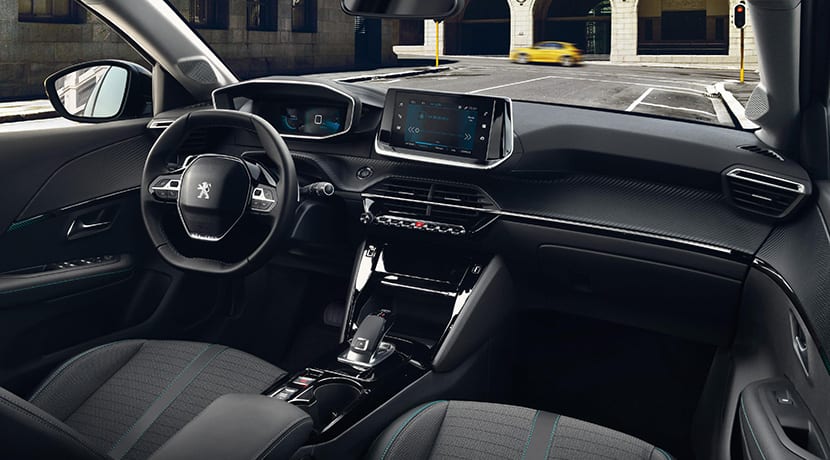
What about the engines? Well, they are identical to those of the Corsa. We have an electric 136 hp, three gasoline with a 1.2-liter in versions of 75, 100 and 130 hp, and a mechanical diesel 1.5 100 hp. We find 5 and 6-speed manual gearboxes, as well as an optional 8-speed automatic transmission in some cases and standard on the 130 hp variant.
Regarding the Finished, the access variant corresponds to the Like finish, which very few customers will buy. The bulk of sales will be taken by the Active, which is probably the most balanced for a car in this segment. Above are the luxurious and always appetizing Allure, as well as the sporty GT Line that adds that touch of spice to the aesthetics of the French utility vehicle. As in most of its rivals, the latest safety systems and driving assistants are not lacking.

Thinking of a logical purchase, the one that any client could consider, let's see how much a Peugeot 208 with medium-high equipment and a logical engine for this car would cost us. We opt for the finish Allure (since the Active limits us the incorporation of some options that interest us), to which we are going to add several extras, and for the 1.2 engine 100hp PureTech. According to the configurator, the PVP of this version is 16.800 euros.
Adding extras such as wireless mobile charging, parking assistance with front and rear sensors and automatic emergency braking with pedestrian detection, the price rises to $17.500. I remember that it is PVP according to the configurator, so it should drop significantly when consulting a dealer and applying discounts.
Seat Ibiza

We leave the French model aside and we come to Martorell, to Spain. The Seat Ibiza It is one of the "most loved" models by Spanish society. And it is not for less, because it reflects a youthful, lively and sporty spirit. Year after year it is usually among the best-selling cars in our country and, as a general rule, it is usually a good option.
The current Seat Ibiza has already been on the market for a couple of years. We first tested it in a very poorly equipped version with somewhat fair mechanical performance, and later we opted for an FR finish and a much more solvent diesel mechanic.
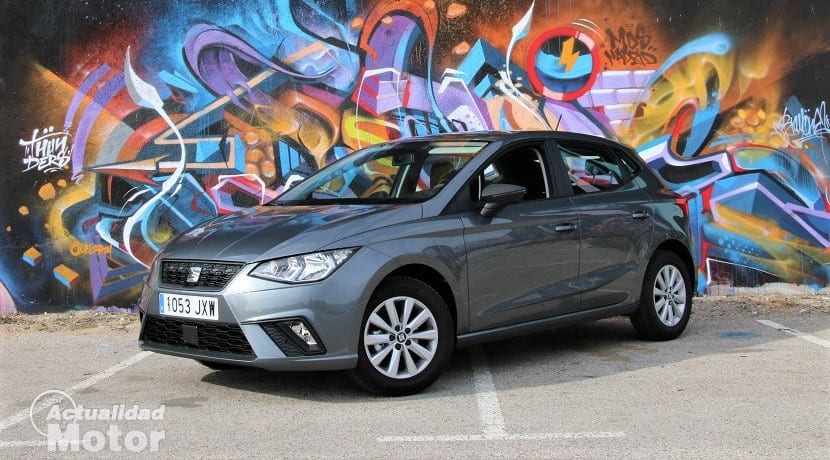

On the other hand, in the same way that the Peugeot 208 and the Opel Corsa share a platform and mechanics, the Ibiza and the Volkswagen Polo belong to the same manufacturer. Therefore, many features are similar between both, being the same MQB A0 platform and, therefore, sharing engines. Of course, they have set-ups and somewhat different interior qualities.
La exterior aesthetics of the Seat Ibiza is youthful and sporty, although somewhat more conservative than that of the new 208. In the interior Straight lines predominate, a quite acceptable level of finish for the segment in which we are, although, as usual in the category, resorting to many hard plastics between the different elements that make up the dashboard and the interior trim.
Level It can be very high, with driving aid systems such as adaptive cruise control, city emergency braking, parking sensors and cameras, automatic high beams, and much more. LED headlights are not missing either. In the middle of 2018, the digital instrument panel was incorporated, projecting the navigation data on it.

Regarding the engines, the Seat Ibiza is available with 80, 95 and 115 hp petrol mechanics, as well as a 1.6 hp 95 TDI diesel. There is also a mechanical 1.0 TGI 90 hp that uses Compressed Natural Gas (CNG) as fuel, with a small fuel tank as a "reserve". An interesting option since, in addition to being a cleaner and cheaper fuel, it gives it the DGT Eco environmental label.
At the level of equipments, the utility vehicle from the Spanish firm has the Reference Plus, Style, Xcellence and FR base finishes, to which we must add the Plus finishes in Style, Xcellence and FR; that add some more equipment to them. Without a doubt, the most “showy” is the FR (and FR Plus) due to its sports finishes, but it is also more expensive.
A logical version would be the trim level StylePlus and the 1.0 TSI petrol engine with 95 CV. The starting price of this variant would be, according to the configurator, 15.270 euros. For just 630 euros more we could make the leap to the 115 hp mechanics, a tempting offer. The Style Plus comes standard with 15-inch alloy wheels, central armrest, electric windows in the four windows, full link to synchronize with our smartphone, 6,5-inch central screen, emergency braking, dual-zone climate control, light and rain sensors. and electric folding mirrors among others.
If we add to this equipment the optional front and rear parking sensors, the digital instrument panel and the navigator with an 8-inch central screen, the price amounts to 16.660 euros. In my opinion, the digital instrument panel is a good option as long as the navigator is also purchased. If not, I don't think it's worth it.
Ignoring these two options -and always talking about the configurator price- we can have a 95 hp and properly equipped Ibiza for 15.620 euros. Personally, I would also include the 16-inch wheels, which represent an additional cost of 300 euros; so the final price of a fairly reasonable variant would be $15.920.
Volkswagen Polo
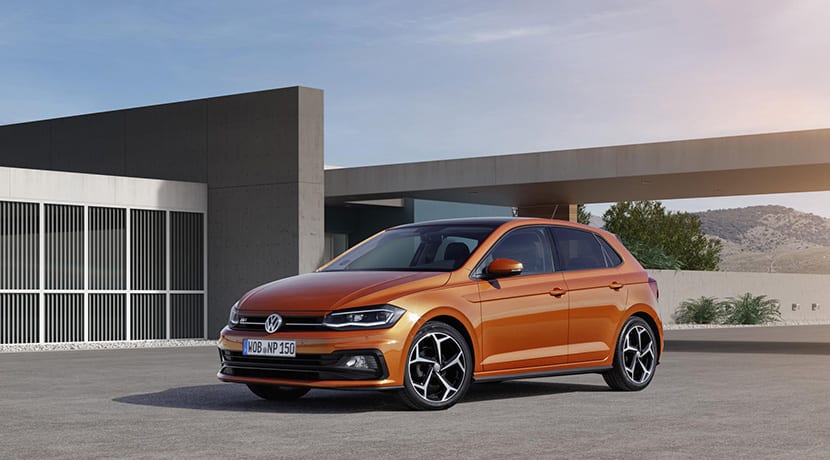
The last of the most important rivals of the Renault Clio is the Volkswagen Polo, a myth of the Wolfsburg firm. Like the Ibiza, the Polo uses the MQB A0 platform, which in turn is shared with other models such as the Seat Arona or the Volkswagen T-Cross. This model was also completely renewed in 2017 and a few weeks later we were able to get behind the wheel.
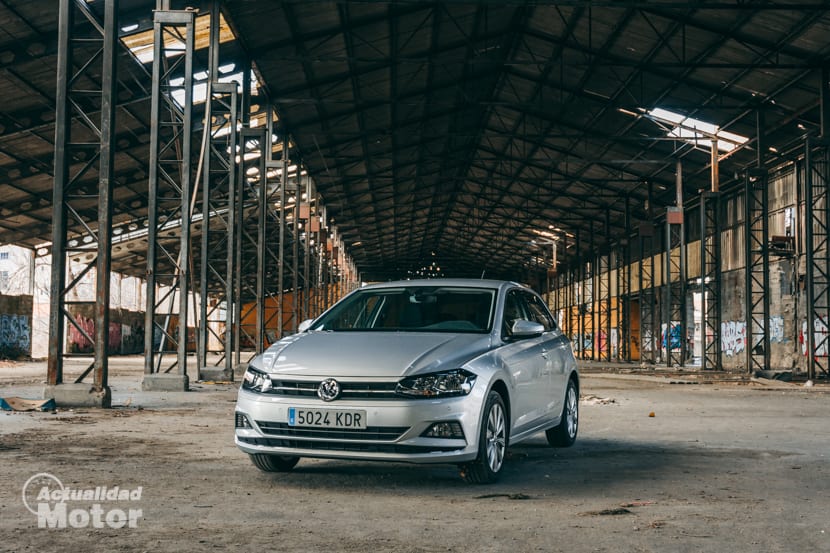
All the general lines of design They are very similar to those of the Martorell utility vehicle, but there are some details that change its personality. In terms of design, the Polo resorts to straight and horizontal lines, transmitting a more "serious" image - to put it in some way - and not so focused on the especially young public. More Volkswagen character, no doubt.
At interiorThey also share many similarities. Again, the interior of the Polo is more sober, but it should be noted that the level of quality is one point above. In fact, the Polo is the one with the most attention to detail, using materials that look and feel better than its rivals. In that sense, his pursuer is the Ford Fiesta, which also conveys a good feeling of quality in the cabin.

The available engines in this Volkswagen Polo they are the same as in the Ibiza. Therefore, we can choose 80, 95 and 115 hp gasoline mechanics, and a 1.6 hp 95 TDI diesel. To these must be added the 2.0 hp 200 TSI, which is exclusive to the sports car volkswagen polo gti. No version with alternative fuel is currently available, although it is true that months ago a CNG TGI mechanic with 90 hp was offered.
As for Finished, this Wolfsburg utility (also produced in Spain, by the way) we find, in order of least to most equipment, the finishes Edition, Advance, Beats, Sport and GTI. The Edition finish is the access one, and although it already has some important systems such as city emergency braking with pedestrian detection, its appearance is a bit “poor”.
Currently, I believe that a recommended purchase -for product price ratio- is the motor 1.0 TSI 95 hp with Advance finish. The price without extras of this version is 14.960 euros according to the configurator and benefiting from promotional and financing discounts. If we add packages that include dual-zone climate control, central armrest, USB sockets, light and rain sensors, electric folding mirrors and some other detail, the price is at $16.485.
Which one to buy?
As always when buying a car, everything depends on the tastes and preferences of each client. There are those who prefer very high equipment, others who give more importance to design and also those who seek greater habitability and space in the trunk.
If you are looking for a novel design, perhaps the Peugeot 208 and the Opel Corsa are the best candidates. On the contrary, for those who value the interior and trunk space more, the most recommended options are the Volkswagen Polo and the Seat Ibiza, in addition to the Renault Clio, which is the one with the most capacity in the category. In terms of quality - in the absence of carefully testing the new Corsa and 208 - the Polo and the Fiesta are highly recommended. Anyway, we sense that the Peugeot utility will also be good in that regard.
taking stock, probably the most balanced of all of them is the Seat Ibiza, because it enjoys a youthful and pleasant design, correct qualities for this segment B, as well as remarkable interior space and boot capacity. Of course, we will have to test the new Renault Clio in depth, to see if it really is a more complete candidate for segment B.
